From 1920 to 1960, Otis Noel Pruitt used his camera to document the lives of people in and around Columbus, Mississippi. From baptisms in the nearby Tombigbee River to parades, revivals, studio portraits, the aftermath of tornadoes, downtown crowds and more, Pruitt was there with his camera and created tens of thousands of images.
About 80 of his photographs are featured in “Mr. Pruitt’s Possum Town: Trouble and Resilience in the American South,” an exhibition running through Sept. 13 at the Delta Cultural Center in Helena-West Helena.
The exhibition is the result of decades of work by Berkley Hudson, associate professor emeritus at the University of Missouri School of Journalism and author of “ON Pruitt’s Possum Town: Photographing Trouble and Resilience in the American South,” a 2021 book that includes more than 190 of Pruitt’s photographs, plus a biographical introduction, essays and captions. (Possum Town, by the way, was the name of Columbus, which the Choctaw and Chickasaw gave to him after noticing the opossum-like face of the head of the local trading post.)
Hudson, who was in Helena-West Helena for the exhibition opening in July, returns Thursday to moderate a panel discussion titled “Pruitt’s Images of Anger and Resilience: Searching for Answers. Uncovering Commonalities,” beginning at 5:30 p.m. at Beth El Heritage Hall, 406 Perry St.
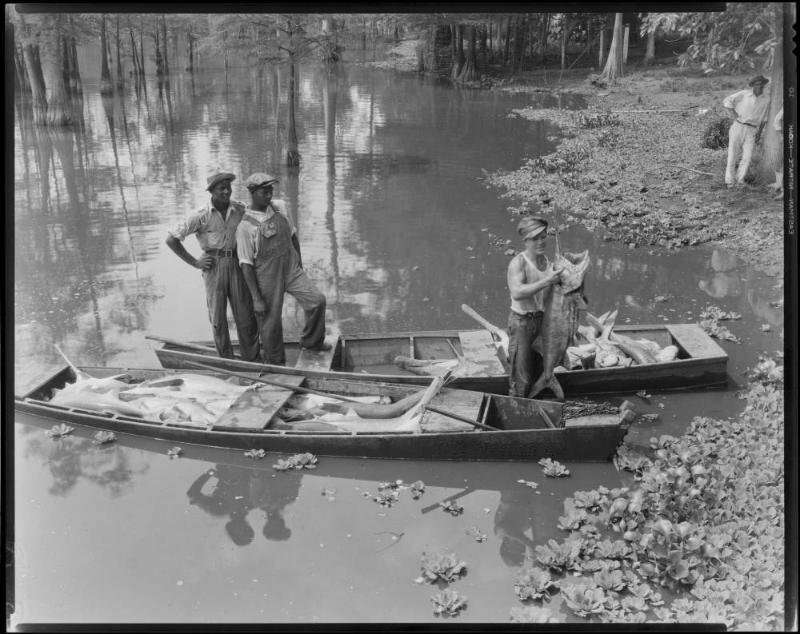 Jim Wilder (foreground) holds a spoonbill catfish in Alligator Lake; William Jimmison is at far left; 8×10 black-and-white sheet film. Columbus, Mississippi, ca. 1930s. (Special to the Democrat-Gazette/Photo by ON Pruitt. Courtesy of the Southern Historical Collection, University of North Carolina at Chapel Hill Libraries)
Jim Wilder (foreground) holds a spoonbill catfish in Alligator Lake; William Jimmison is at far left; 8×10 black-and-white sheet film. Columbus, Mississippi, ca. 1930s. (Special to the Democrat-Gazette/Photo by ON Pruitt. Courtesy of the Southern Historical Collection, University of North Carolina at Chapel Hill Libraries)
He is joined by Rachel Boillot, large-format photographer and professor in the art department at Arkansas State University, W. Ralph Eubanks, faculty member at the Center for the Study of Southern Culture at the University of Mississippi and former publishing director of the Library of Congress, and Tom Rankin, professor of art practice, art history and visual studies at Duke University.
Hudson, 72, grew up in Columbus, a city of about 25,000 people in the northeastern part of the state, and was actually photographed several times by Pruitt, who died in 1967.
“I knew him my whole life growing up,” he says from his home in Chapel Hill, NC
Hudson earned degrees in journalism and history from Ole Miss and continued his studies at Columbia University in New York before beginning a 25-year career as a newspaper and magazine journalist.
In the 1970s, Hudson’s friends Mark Gooch and Birney Imes, on a visit home, showed him the tens of thousands of negatives that belonged to Pruitt, stored in cardboard boxes and wooden crates on the second floor of a building on Main Street that housed the photography studio of Calvin Shanks, a former employee of Pruitt.
Hudson and his friends tried to buy the negatives from Shanks, but he refused. After his death in 1983, the owner of a hardware store bought the negatives and sold the treasure to Hudson and his friends, who by then included Jim Carnes and David Gooch, in 1987. They found a permanent home at the University of North Carolina at Chapel Hill for the collection, which former National Endowment for the Humanities chairman William Reynolds Ferris called a “national treasure.”
“It was incredible,” Hudson says of the images. “I realized that this was a photobiography of the place I grew up in. But I also realized that there were stories here that I had never heard and that there were people I didn’t know.”
He remembers coming across a seemingly innocuous photograph Pruitt took of a black man with a mule in front of a house.
“There was no information on the print and I just wondered who this man with this mule was.”
After about eight years of research, including showing the photo to Columbus residents, Hudson discovered the photo on the front page of a 1934 edition of the Columbus newspaper, the Commercial Dispatch. The man was Sylvester Harris. During the Depression, Harris, a farmer who couldn’t pay his mortgage, went into town to call President Franklin D. Roosevelt from a pay phone. Harris did indeed speak to Roosevelt, who agreed to help him.
The story gained momentum, and Harris was featured in national newspaper articles and newsreels. Blues singer Memphis Minnie even recorded a song: “Sylvester and His Mule Blues.”
“It went viral,” Hudson says, long before the term had the meaning it has today.
 Berkley Hudson, author of “ON Pruitt’s Possum Town: Photographing Trouble and Resilience in the American South,” will participate in a panel discussion Thursday in Helena-West Helena to discuss the work of Columbus, Mississippi, photographer ON Pruitt. (Special to the Democrat-Gazette/Tom Rankin)
Berkley Hudson, author of “ON Pruitt’s Possum Town: Photographing Trouble and Resilience in the American South,” will participate in a panel discussion Thursday in Helena-West Helena to discuss the work of Columbus, Mississippi, photographer ON Pruitt. (Special to the Democrat-Gazette/Tom Rankin)
■ ■ ■
Although he was white and conservative, Pruitt regularly took photographs of black residents.
“It shows us a broad spectrum of community life, filtered through the perspective of a white man in a highly segregated society made up primarily of Anglo-Americans and African-Americans,” Hudson says.
Eubanks, a Mississippi native and author of “A Place Like Mississippi” and the forthcoming “When It’s Darkness on the Delta: An American Reckoning,” first saw the exhibit in 2022 when it premiered in Columbus.
Pruitt’s photographs, he says, “are like a time capsule that you’ve locked away and seen all kinds of things. … But this one focuses on the Black Belt of Mississippi, which gives you a very different view of the landscape.”
Boillot, the photographer and Arkansas State University professor, says, “One of the things that struck me most about his work when I first saw it was that he photographed people of color in their homes. That was really unique. What I appreciate about this work is that it’s a record of a complicated time, but he was engaging with the African-American community. You can tell there’s comfort and that he gave people a sense of reassurance.”
A special feature of Pruitt was that he worked as a photographer and, in addition to studio shots and portraits, also took photos of current events.
“He was addicted to photography,” says Hudson. “He was a very good photographer.”
Pruitt was “the city’s archivist,” says Boillot. “He photographed everything that happened in Columbus. In this way, he became a small-town historian.”
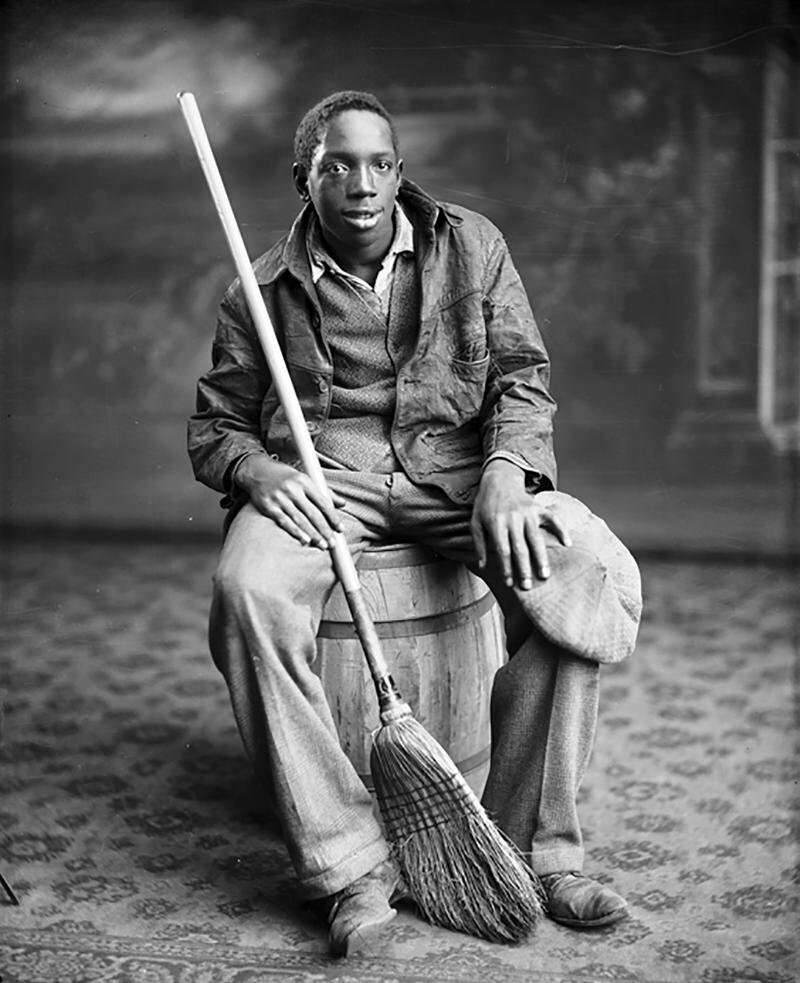 Oscar West, circa 1930. (Special to the Democrat-Gazette/Photo by ON Pruitt. Courtesy of the Southern Historical Collection, University of North Carolina at Chapel Hill Libraries)
Oscar West, circa 1930. (Special to the Democrat-Gazette/Photo by ON Pruitt. Courtesy of the Southern Historical Collection, University of North Carolina at Chapel Hill Libraries)
■ ■ ■
However, this story also had a dark side. Among the photographs in the exhibition are images of the lynching of two black men and the execution of two more black men. They are displayed in a separate area from the other photos, and a sign warns of the graphic content. The photos are also included in Hudson’s book.
“It’s hard to look at them,” Eubanks says. “You have to choose to see these pictures (in the exhibition). I’m glad I chose to look at them. I had this sinking feeling in my stomach.”
Boillot, a native New Yorker, says, “I think it’s important that things we may not want to see are not lost. Sometimes we need to see things we don’t necessarily want to see.”
Hudson studied under Deborah Willis, who is now a professor and head of the photography and imaging department at New York University’s Tisch School of the Arts. He says she encouraged him to publish and exhibit the images. He also received support in publishing the images from Bryan Stephenson, founder of the Equal Justice Initiative, the nonprofit organization that created the National Memorial for Peace and Justice.
Hudson says he never heard of lynchings growing up, and these images tell a story that has been suppressed in some circles.
“As I walked the streets of Columbus, I realized there were all these people there, maybe third or fourth generation, and they had all heard the story of the lynchings. But I and my friends had never heard it.”
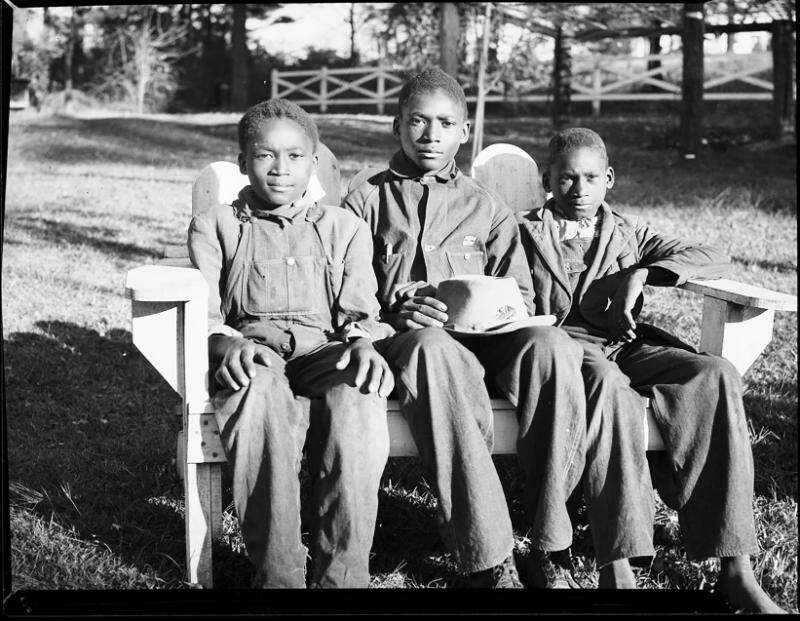 Three boys in overalls on a bench. Lowndes County, Mississippi, 4×5 black and white sheet film (Special to the Democrat-Gazette/ON Pruitt. Courtesy of the Southern Historical Collection, University of North Carolina at Chapel Hill Libraries)
Three boys in overalls on a bench. Lowndes County, Mississippi, 4×5 black and white sheet film (Special to the Democrat-Gazette/ON Pruitt. Courtesy of the Southern Historical Collection, University of North Carolina at Chapel Hill Libraries)
■ ■ ■
Looking at Pruitt’s pictures, Eubanks says he is reminded of the opening line of LP Hartley’s 1953 novel The Go-between: “The past is a foreign country. They do things differently there.”
“In many ways the past is a foreign country,” he says, “but when you go back and look at these photos, you realize it’s not that far away. It looks like it was a long time ago, but in reality it wasn’t that long ago. You can look at a lot of these pictures and see elements of the present.”
Pruitt has been a part of Hudson’s life since childhood, and it is thanks to Hudson and his friends that the photographer’s work, a decades-long documentation of everyday life in a small, complex part of the South, has been preserved.
“I want the world to know about Pruitt,” he says. “I think when people look at these pictures… if they stop and look, they will discover things about their own lives.”
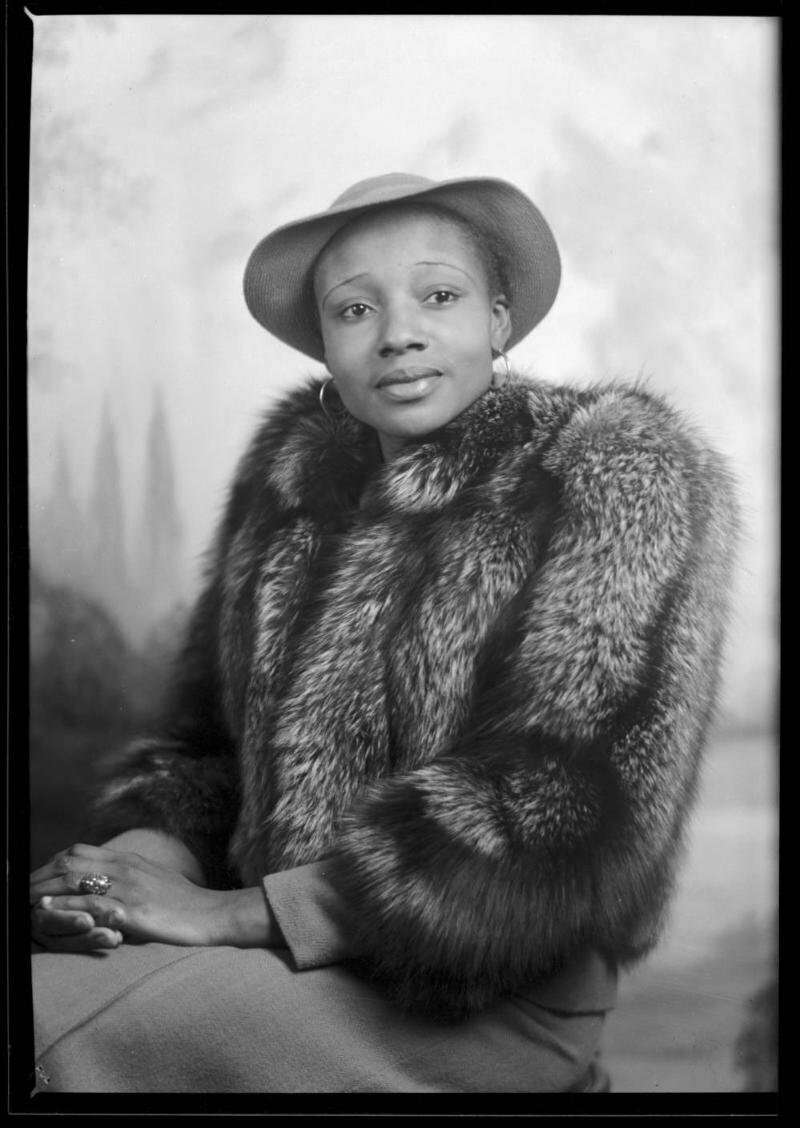 Studio portrait of a woman, Columbus, Mississippi, 4×5 black and white sheet film. (Special to the Democrat-Gazette/ON Pruitt. Courtesy of the Southern Historical Collection, University of North Carolina at Chapel Hill Libraries)
Studio portrait of a woman, Columbus, Mississippi, 4×5 black and white sheet film. (Special to the Democrat-Gazette/ON Pruitt. Courtesy of the Southern Historical Collection, University of North Carolina at Chapel Hill Libraries) 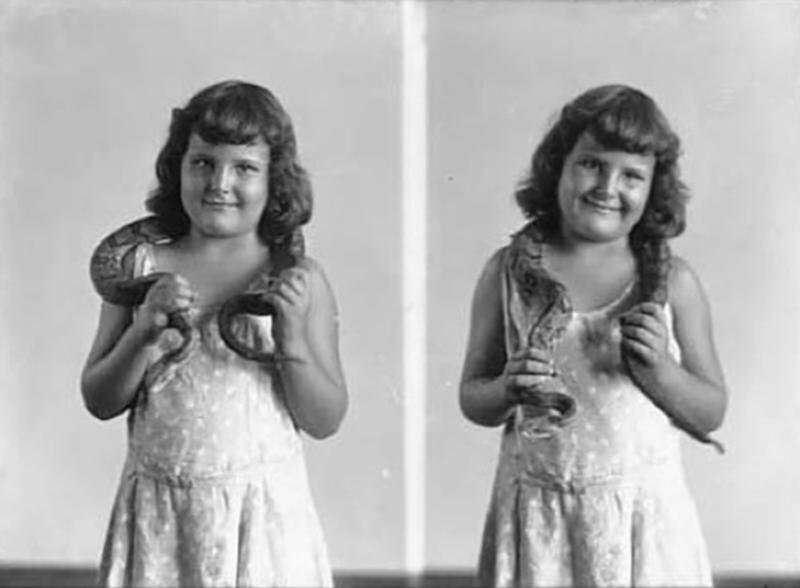 Girl with live canebrake rattlesnake, 5×7 glass plate negative, ca. 1920s-1930s. (Special to the Democrat-Gazette/ON Pruitt. Courtesy of the Southern Historical Collection, University of North Carolina at Chapel Hill Libraries)
Girl with live canebrake rattlesnake, 5×7 glass plate negative, ca. 1920s-1930s. (Special to the Democrat-Gazette/ON Pruitt. Courtesy of the Southern Historical Collection, University of North Carolina at Chapel Hill Libraries) “Mr. Pruitt’s Possum Town: Anger and Resilience in the American South”
- Through Sept. 13, Delta Cultural Center, 141 Cherry St., Helena-West Helena
- Tuesday-Saturday, 9am-5pm
- Admission free
- Information: (870) 338-4350
- arkansasheritage.com
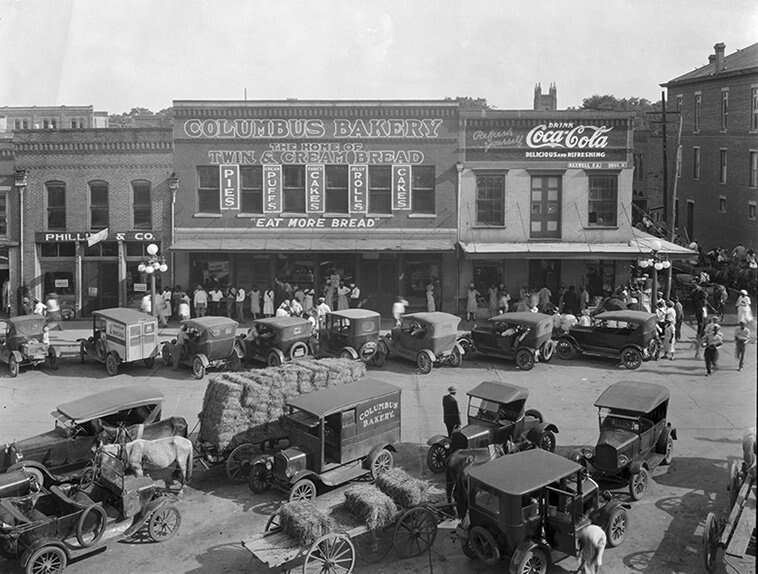 A farm hay market that also sold hogs, chickens, sorghum and cane syrup, Main Street at the intersection of Catfish Alley, Columbus, Mississippi, ca. 1927. (Special to the Democrat-Gazette/ON Pruitt. Courtesy of the Southern Historical Collection, University of North Carolina at Chapel Hill Libraries)
A farm hay market that also sold hogs, chickens, sorghum and cane syrup, Main Street at the intersection of Catfish Alley, Columbus, Mississippi, ca. 1927. (Special to the Democrat-Gazette/ON Pruitt. Courtesy of the Southern Historical Collection, University of North Carolina at Chapel Hill Libraries)
“Pruitt’s images of anger and resilience – searching for answers. Discovering commonalities“
- Panel discussion with Rachel Boillot, Tom Rankin and Berkley Hudson
- Thursday, 5:30 p.m., Beth El Heritage Hall, 406 Perry St. in Helena-West Helena
- Admission free
- Information: (870) 338-4350

